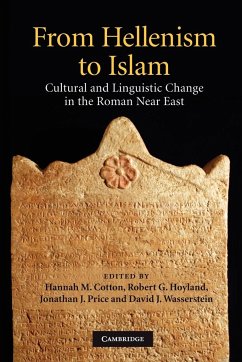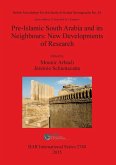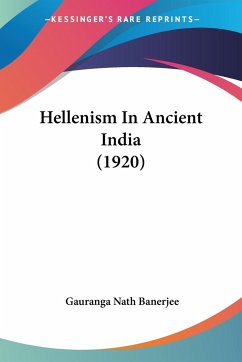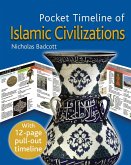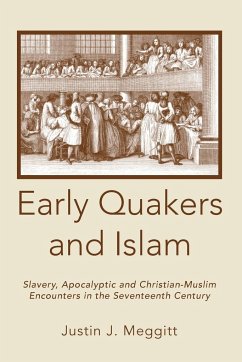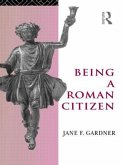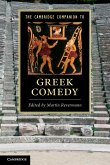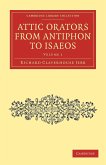From Hellenism to Islam
Cultural and Linguistic Change in the Roman Near East
Herausgeber: Cotton, Hannah M.; Price, Jonathan J.; Hoyland, Robert G.
From Hellenism to Islam
Cultural and Linguistic Change in the Roman Near East
Herausgeber: Cotton, Hannah M.; Price, Jonathan J.; Hoyland, Robert G.
- Broschiertes Buch
- Merkliste
- Auf die Merkliste
- Bewerten Bewerten
- Teilen
- Produkt teilen
- Produkterinnerung
- Produkterinnerung
This book considers how languages, peoples and cultures in the Near East interacted over the millennium between Alexander and Muhammad.
Andere Kunden interessierten sich auch für
![Pre-Islamic South Arabia and its Neighbours Pre-Islamic South Arabia and its Neighbours]() Pre-Islamic South Arabia and its Neighbours132,99 €
Pre-Islamic South Arabia and its Neighbours132,99 €![Hellenism In Ancient India (1920) Hellenism In Ancient India (1920)]() Gauranga Nath BanerjeeHellenism In Ancient India (1920)35,99 €
Gauranga Nath BanerjeeHellenism In Ancient India (1920)35,99 €![The Pocket Timeline of Islamic Civilizations The Pocket Timeline of Islamic Civilizations]() Nicholas BadcottThe Pocket Timeline of Islamic Civilizations13,99 €
Nicholas BadcottThe Pocket Timeline of Islamic Civilizations13,99 €![Early Quakers and Islam Early Quakers and Islam]() Justin J. MeggittEarly Quakers and Islam18,99 €
Justin J. MeggittEarly Quakers and Islam18,99 €![Being a Roman Citizen Being a Roman Citizen]() Jane F. GardnerBeing a Roman Citizen81,99 €
Jane F. GardnerBeing a Roman Citizen81,99 €![The Cambridge Companion to Greek Comedy The Cambridge Companion to Greek Comedy]() The Cambridge Companion to Greek Comedy45,99 €
The Cambridge Companion to Greek Comedy45,99 €![Attic Orators from Antiphon to Isaeos - Volume 1 Attic Orators from Antiphon to Isaeos - Volume 1]() Richard Claverhouse JebbAttic Orators from Antiphon to Isaeos - Volume 151,99 €
Richard Claverhouse JebbAttic Orators from Antiphon to Isaeos - Volume 151,99 €-
-
-
This book considers how languages, peoples and cultures in the Near East interacted over the millennium between Alexander and Muhammad.
Hinweis: Dieser Artikel kann nur an eine deutsche Lieferadresse ausgeliefert werden.
Hinweis: Dieser Artikel kann nur an eine deutsche Lieferadresse ausgeliefert werden.
Produktdetails
- Produktdetails
- Verlag: Cambridge University Press
- Seitenzahl: 512
- Erscheinungstermin: 10. Oktober 2011
- Englisch
- Abmessung: 229mm x 152mm x 30mm
- Gewicht: 823g
- ISBN-13: 9781107403956
- ISBN-10: 1107403952
- Artikelnr.: 34449214
- Herstellerkennzeichnung
- Books on Demand GmbH
- In de Tarpen 42
- 22848 Norderstedt
- info@bod.de
- 040 53433511
- Verlag: Cambridge University Press
- Seitenzahl: 512
- Erscheinungstermin: 10. Oktober 2011
- Englisch
- Abmessung: 229mm x 152mm x 30mm
- Gewicht: 823g
- ISBN-13: 9781107403956
- ISBN-10: 1107403952
- Artikelnr.: 34449214
- Herstellerkennzeichnung
- Books on Demand GmbH
- In de Tarpen 42
- 22848 Norderstedt
- info@bod.de
- 040 53433511
Introduction Fergus Millar; Part I. The Language of Power: Latin in the
Roman Near East: 1. The presence, role and significance of Latin in the
epigraphy and culture of the Roman Near East Werner Eck; 2. Latin in cities
of the Roman Near East Benjamin Isaac; Part II. Social and Legal
Institutions as Reflected in the Documentary Evidence: 3. Euergetism in
Josephus and the epigraphic culture of first-century Jerusalem Seth
Schwartz; 4. Legal and social status of threptoi and related categories in
narrative and documentary sources Marijana Ricl; 5. Ritual performances of
divine justice: the epigraphy of confession, atonement, and exaltation in
Roman Asia Minor Angelos Chaniotis; 6. Continuity of Nabataean law in the
Petra papyri: a methodological exercise Hannah M. Cotton; Part III. The
Epigraphic Language of Religion: 7. 'Languages' and religion in
second-fourth century Palestine. In search of the impact of Rome Nicole
Belayche; 8. The epigraphic habit and the Jewish diasporas of Asia Minor
and Syria Walter Ameling; 9. Religion and language in Dura-Europos Ted
Kaizer; Part IV. Linguistic Metamorphoses and Continuity of Cultures: 10.
On the margins of culture: the practice of transcription in the ancient
world Jonathan Price and Shlomo Naeh; 11. Edessene Syriac inscriptions in
late antique Syria Sebastian Brock; 12. Samaritan writing and writings Dan
Barag; 13. The Jewish magical tradition from late antique Palestine to the
Cairo Geniza Gideon Bohak; Part V. Greek into Arabic: 14. The Nabataean
connection of the Benei Hezir Axel Knauf; 15. Greek inscriptions in
transition from the Byzantine to the early Islamic period Leah Di Segni;
16. Arab kings, Arab tribes and the beginnings of Arab historical memory in
late Roman epigraphy Robert Hoyland; 17. Greek, Coptic, and the 'language
of the Hijra': rise and decline of the Coptic language in late antique and
medieval Egypt Sebastian Richter; 18. 'What remains behind': Hellenism and
Romanitas in Christian Egypt after the Arab conquest Arietta
Papaconstantinou.
Roman Near East: 1. The presence, role and significance of Latin in the
epigraphy and culture of the Roman Near East Werner Eck; 2. Latin in cities
of the Roman Near East Benjamin Isaac; Part II. Social and Legal
Institutions as Reflected in the Documentary Evidence: 3. Euergetism in
Josephus and the epigraphic culture of first-century Jerusalem Seth
Schwartz; 4. Legal and social status of threptoi and related categories in
narrative and documentary sources Marijana Ricl; 5. Ritual performances of
divine justice: the epigraphy of confession, atonement, and exaltation in
Roman Asia Minor Angelos Chaniotis; 6. Continuity of Nabataean law in the
Petra papyri: a methodological exercise Hannah M. Cotton; Part III. The
Epigraphic Language of Religion: 7. 'Languages' and religion in
second-fourth century Palestine. In search of the impact of Rome Nicole
Belayche; 8. The epigraphic habit and the Jewish diasporas of Asia Minor
and Syria Walter Ameling; 9. Religion and language in Dura-Europos Ted
Kaizer; Part IV. Linguistic Metamorphoses and Continuity of Cultures: 10.
On the margins of culture: the practice of transcription in the ancient
world Jonathan Price and Shlomo Naeh; 11. Edessene Syriac inscriptions in
late antique Syria Sebastian Brock; 12. Samaritan writing and writings Dan
Barag; 13. The Jewish magical tradition from late antique Palestine to the
Cairo Geniza Gideon Bohak; Part V. Greek into Arabic: 14. The Nabataean
connection of the Benei Hezir Axel Knauf; 15. Greek inscriptions in
transition from the Byzantine to the early Islamic period Leah Di Segni;
16. Arab kings, Arab tribes and the beginnings of Arab historical memory in
late Roman epigraphy Robert Hoyland; 17. Greek, Coptic, and the 'language
of the Hijra': rise and decline of the Coptic language in late antique and
medieval Egypt Sebastian Richter; 18. 'What remains behind': Hellenism and
Romanitas in Christian Egypt after the Arab conquest Arietta
Papaconstantinou.
Introduction Fergus Millar; Part I. The Language of Power: Latin in the
Roman Near East: 1. The presence, role and significance of Latin in the
epigraphy and culture of the Roman Near East Werner Eck; 2. Latin in cities
of the Roman Near East Benjamin Isaac; Part II. Social and Legal
Institutions as Reflected in the Documentary Evidence: 3. Euergetism in
Josephus and the epigraphic culture of first-century Jerusalem Seth
Schwartz; 4. Legal and social status of threptoi and related categories in
narrative and documentary sources Marijana Ricl; 5. Ritual performances of
divine justice: the epigraphy of confession, atonement, and exaltation in
Roman Asia Minor Angelos Chaniotis; 6. Continuity of Nabataean law in the
Petra papyri: a methodological exercise Hannah M. Cotton; Part III. The
Epigraphic Language of Religion: 7. 'Languages' and religion in
second-fourth century Palestine. In search of the impact of Rome Nicole
Belayche; 8. The epigraphic habit and the Jewish diasporas of Asia Minor
and Syria Walter Ameling; 9. Religion and language in Dura-Europos Ted
Kaizer; Part IV. Linguistic Metamorphoses and Continuity of Cultures: 10.
On the margins of culture: the practice of transcription in the ancient
world Jonathan Price and Shlomo Naeh; 11. Edessene Syriac inscriptions in
late antique Syria Sebastian Brock; 12. Samaritan writing and writings Dan
Barag; 13. The Jewish magical tradition from late antique Palestine to the
Cairo Geniza Gideon Bohak; Part V. Greek into Arabic: 14. The Nabataean
connection of the Benei Hezir Axel Knauf; 15. Greek inscriptions in
transition from the Byzantine to the early Islamic period Leah Di Segni;
16. Arab kings, Arab tribes and the beginnings of Arab historical memory in
late Roman epigraphy Robert Hoyland; 17. Greek, Coptic, and the 'language
of the Hijra': rise and decline of the Coptic language in late antique and
medieval Egypt Sebastian Richter; 18. 'What remains behind': Hellenism and
Romanitas in Christian Egypt after the Arab conquest Arietta
Papaconstantinou.
Roman Near East: 1. The presence, role and significance of Latin in the
epigraphy and culture of the Roman Near East Werner Eck; 2. Latin in cities
of the Roman Near East Benjamin Isaac; Part II. Social and Legal
Institutions as Reflected in the Documentary Evidence: 3. Euergetism in
Josephus and the epigraphic culture of first-century Jerusalem Seth
Schwartz; 4. Legal and social status of threptoi and related categories in
narrative and documentary sources Marijana Ricl; 5. Ritual performances of
divine justice: the epigraphy of confession, atonement, and exaltation in
Roman Asia Minor Angelos Chaniotis; 6. Continuity of Nabataean law in the
Petra papyri: a methodological exercise Hannah M. Cotton; Part III. The
Epigraphic Language of Religion: 7. 'Languages' and religion in
second-fourth century Palestine. In search of the impact of Rome Nicole
Belayche; 8. The epigraphic habit and the Jewish diasporas of Asia Minor
and Syria Walter Ameling; 9. Religion and language in Dura-Europos Ted
Kaizer; Part IV. Linguistic Metamorphoses and Continuity of Cultures: 10.
On the margins of culture: the practice of transcription in the ancient
world Jonathan Price and Shlomo Naeh; 11. Edessene Syriac inscriptions in
late antique Syria Sebastian Brock; 12. Samaritan writing and writings Dan
Barag; 13. The Jewish magical tradition from late antique Palestine to the
Cairo Geniza Gideon Bohak; Part V. Greek into Arabic: 14. The Nabataean
connection of the Benei Hezir Axel Knauf; 15. Greek inscriptions in
transition from the Byzantine to the early Islamic period Leah Di Segni;
16. Arab kings, Arab tribes and the beginnings of Arab historical memory in
late Roman epigraphy Robert Hoyland; 17. Greek, Coptic, and the 'language
of the Hijra': rise and decline of the Coptic language in late antique and
medieval Egypt Sebastian Richter; 18. 'What remains behind': Hellenism and
Romanitas in Christian Egypt after the Arab conquest Arietta
Papaconstantinou.

